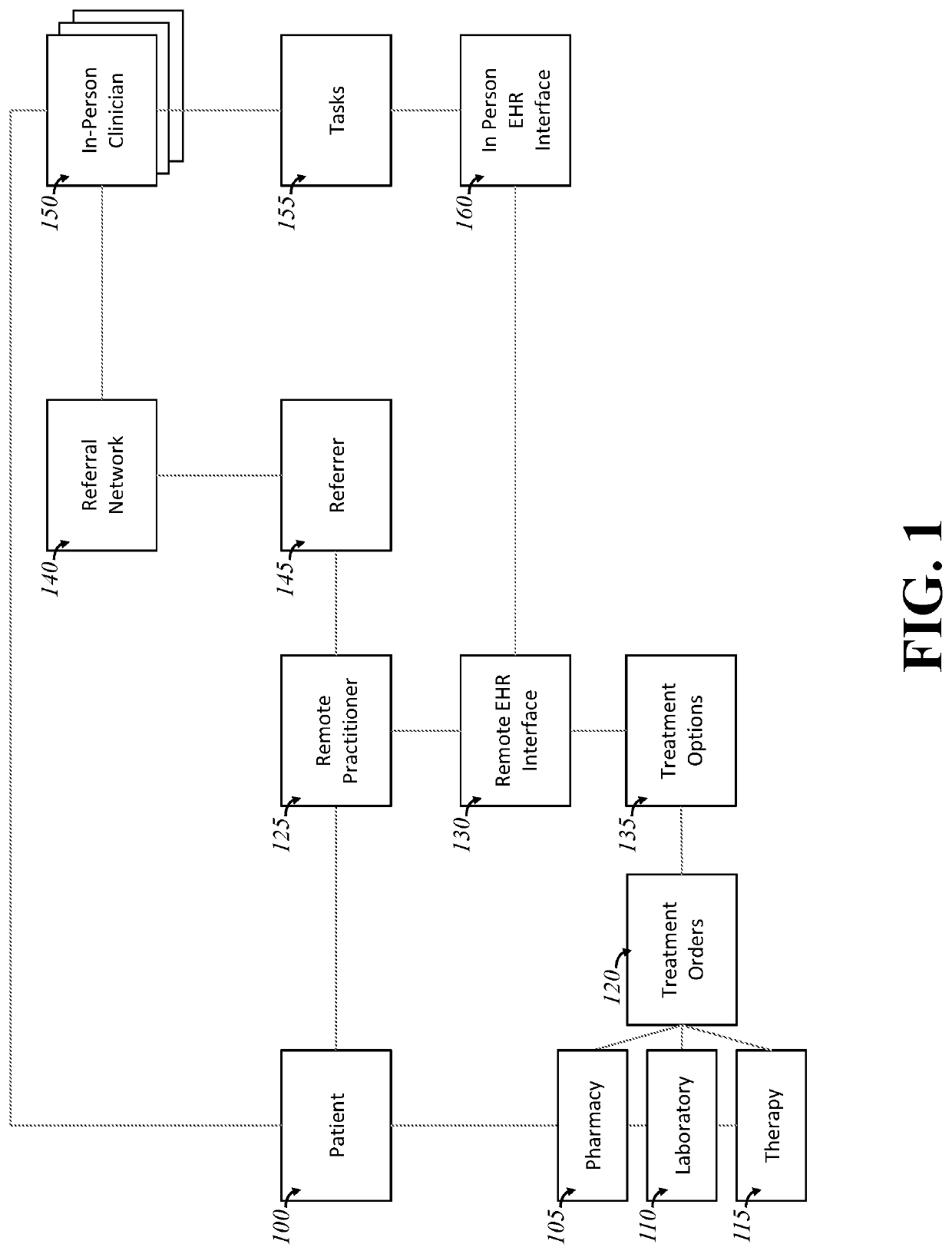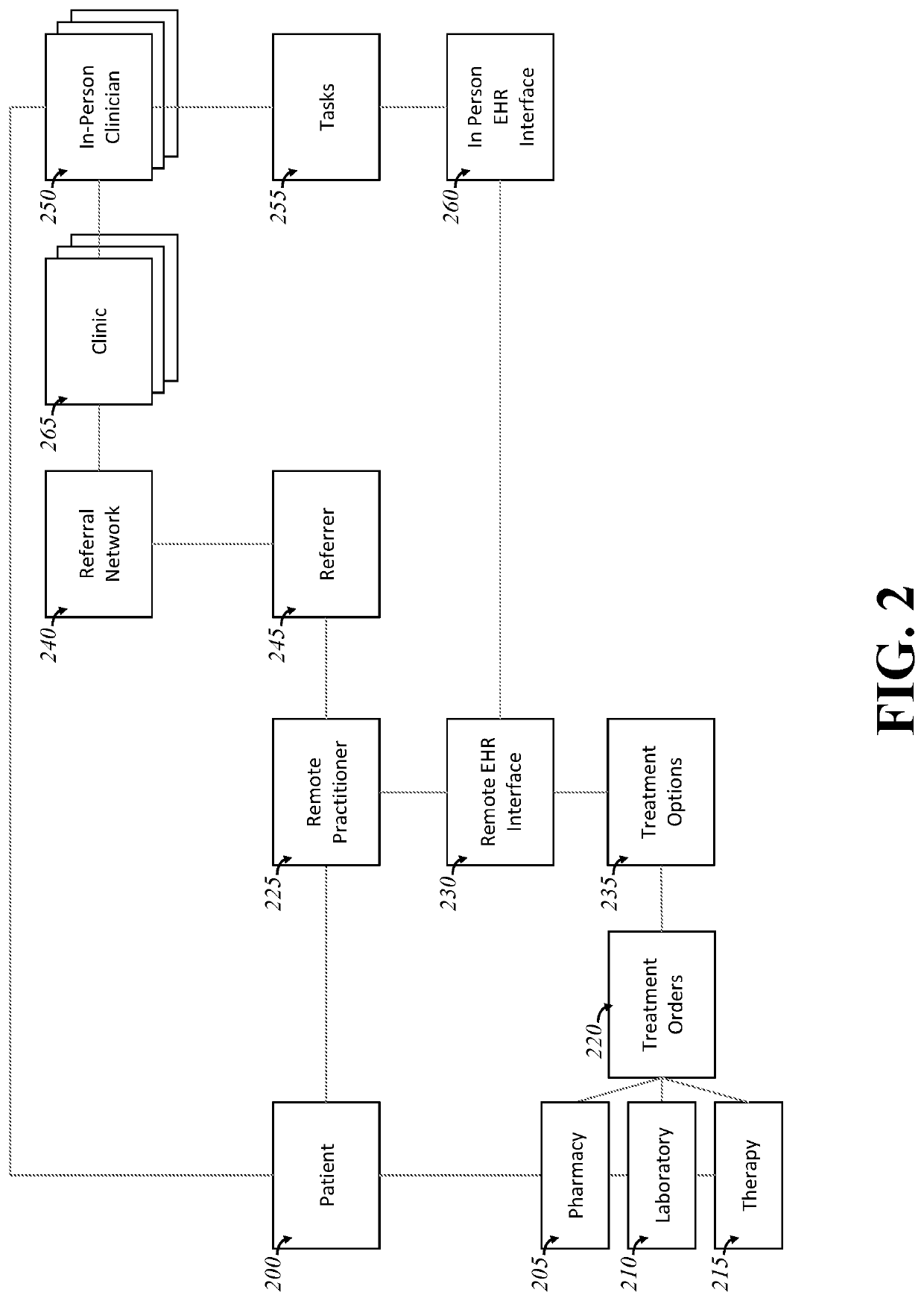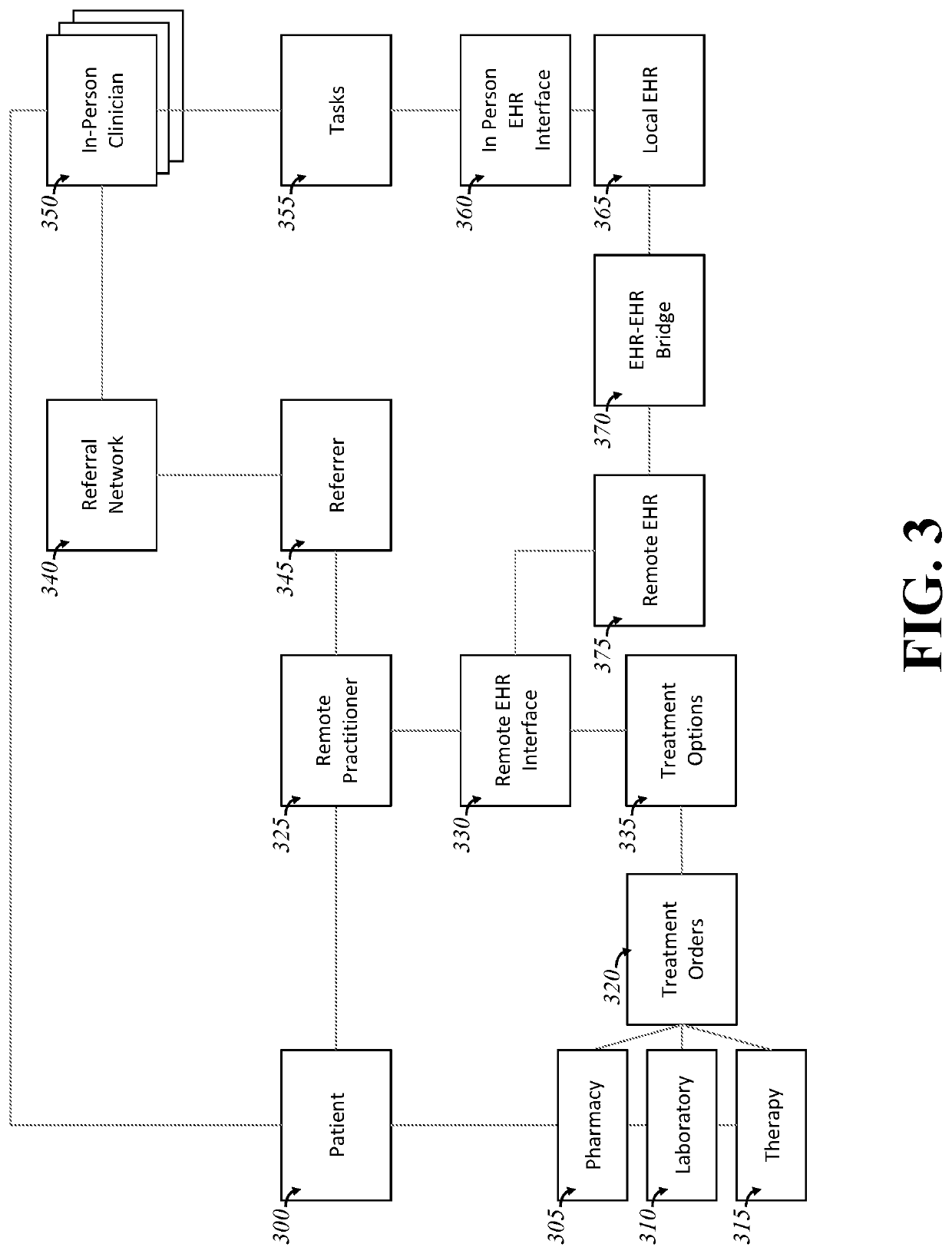System and Method for In-Person Encounters and Assistance for Remote or Noncorporeal Medical Diagnosis and Treatment
a technology for medical diagnosis and treatment, applied in the field of remote patient practice, can solve problems such as interference with being able to refer for minor subprocedures, inability to properly detect diagnostic signs of most disorders, and disruption of continuity of car
- Summary
- Abstract
- Description
- Claims
- Application Information
AI Technical Summary
Benefits of technology
Problems solved by technology
Method used
Image
Examples
Embodiment Construction
[0019]First disclosed are embodiments for a lightweight task (such as impression taking, procedure performing, or treatment providing) referral system, which can be operated independently from the traditional heavyweight EHR and procedure code driven model.
[0020]FIG. 1 shows the general architecture of some embodiments. A patient 100 and remote practitioner 125 interact. When the practitioner 125 requires a referral out to an in-person clinician 150, she requests the referral from a referrer 145. The referrer 145 accesses a referral network 140 to identify one or more in-person clinicians 150 who can perform the requested task or tasks 155. In some embodiments, the referrer searches the list and chooses or down-selects a list of candidate clinicians on the basis of, in whole or in part, one or more of the following: the cost of the clinician, the clinician's ability to perform the task, the clinician's skill or licensure or certification or quality measures taken about their ability...
PUM
 Login to View More
Login to View More Abstract
Description
Claims
Application Information
 Login to View More
Login to View More - R&D
- Intellectual Property
- Life Sciences
- Materials
- Tech Scout
- Unparalleled Data Quality
- Higher Quality Content
- 60% Fewer Hallucinations
Browse by: Latest US Patents, China's latest patents, Technical Efficacy Thesaurus, Application Domain, Technology Topic, Popular Technical Reports.
© 2025 PatSnap. All rights reserved.Legal|Privacy policy|Modern Slavery Act Transparency Statement|Sitemap|About US| Contact US: help@patsnap.com



